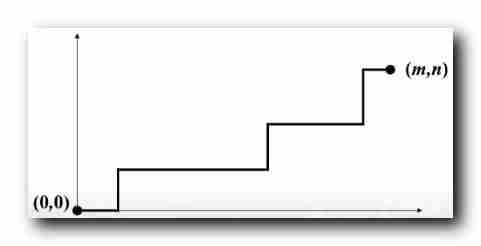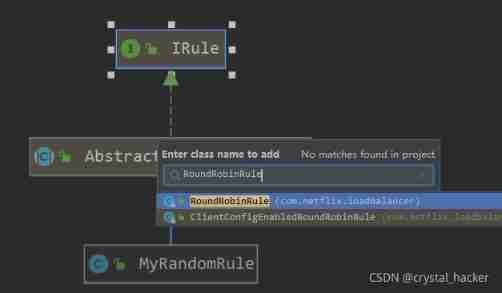当前位置:网站首页>[combinatorics] non descending path problem (outline of non descending path problem | basic model of non descending path problem | non descending path problem expansion model 1 non origin starting poi
[combinatorics] non descending path problem (outline of non descending path problem | basic model of non descending path problem | non descending path problem expansion model 1 non origin starting poi
2022-07-03 16:08:00 【Programmer community】
List of articles
- One 、 Non descending path problem A synopsis
- Two 、 Non descending path problem Basic model
- Two 、 Non descending path problem Expand the model 1
- 3、 ... and 、 Non descending path problem Expand the model 2
Combinatorial identity reference blog :
- 【 Combinatorial mathematics 】 Binomial theorem and combinatorial identities ( binomial theorem | Three combinatorial identities recursion | recursion 1 | recursion 2 | recursion 3 Pascal / Yang Hui's trigonometric formula | Combination analysis method | Characteristics of recursive combinatorial identities )
- 【 Combinatorial mathematics 】 Combinatorial identity ( Recurrence Combinatorial identity | Change the next term to sum Combinatorial identity Simple and | Change the next term to sum Combinatorial identity Staggered and )
- 【 Combinatorial mathematics 】 Combinatorial identity ( Change the next term to sum 3 Combinatorial identity | Change the next term to sum 4 Combinatorial identity | binomial theorem + Derivation Prove the combinatorial identity | Use known combinatorial identities to prove combinatorial identities )
- 【 Combinatorial mathematics 】 Combinatorial identity ( Review of eight combinatorial identities | Combinatorial identity product 1 | prove | Use scenarios )
- 【 Combinatorial mathematics 】 Combinatorial identity ( Combinatorial identity Sum of product 1 | Sum of product 1 prove | Combinatorial identity Sum of product 2 | Sum of product 2 prove )
One 、 Non descending path problem A synopsis
Non descending path problem It is a combined counting model , Using this combined counting model , It can deal with some common combination counting problems ;
Non descending path problem :
( 1 ) Basic model
( 2 ) The number of non descending paths under limited conditions
( 3 ) Application of non descending path model
- ① Proof identity
- ② Monotone function count
- ③ Stack output
Two 、 Non descending path problem Basic model

Calculation from
(
0
,
0
)
(0,0)
(0,0) To
(
m
,
n
)
(m, n)
(m,n) The number of non descending paths ?
1 . Non descending path requirements :
starting point : from
(
0
,
0
)
(0,0)
(0,0) set out ;
Moving coordinate requirements : turn right Integer coordinates , Both horizontal and vertical coordinates go Integer length ;
The direction of movement requires : Only right at a time , Or move up ; Not to the left , Go down ;
2 . Turn to the selection question : Turn it into a selection problem ,
Step analysis : from
(
0
,
0
)
(0,0)
(0,0) To
(
m
,
n
)
(m, n)
(m,n) , Go to the right
m
m
m Step , Go up
n
n
n Step ;
Select the problem description : All in all
m
+
n
m+n
m+n Step , You need to choose those steps up , Which steps to the right , As long as it is in the sum
m
+
n
m + n
m+n In step , Turn to the right
m
m
m After all steps are calibrated , The rest is the upward step ;
Select the number of problem combinations to calculate : So here's just from
m
+
n
m+n
m+n Select
m
m
m Step by step , The result is
C
(
m
+
n
,
m
)
C(m+n, m)
C(m+n,m) , It can be written again
(
m
+
n
m
)
\dbinom{m + n}{m}
(mm+n)
Two 、 Non descending path problem Expand the model 1
Calculation from
(
a
,
b
)
(a,b)
(a,b) To
(
m
,
n
)
(m, n)
(m,n) The number of non descending paths ?
Above from
(
a
,
b
)
(a,b)
(a,b) To
(
m
,
n
)
(m, n)
(m,n) The number of non descending paths ,
be equal to
from
(
0
,
0
)
(0,0)
(0,0) To
(
m
−
a
,
n
−
b
)
(m-a, n-b)
(m−a,n−b) The number of non descending paths ;
Coordinate translation : The above principle is Coordinate translation , Set the overall coordinates Pan left
a
a
a , Translate down
b
b
b , You can get from
(
0
,
0
)
(0,0)
(0,0) To
(
m
−
a
,
n
−
b
)
(m-a, n-b)
(m−a,n−b) Of Basic model of non descending path problem ;
therefore from
(
a
,
b
)
(a,b)
(a,b) To
(
m
,
n
)
(m, n)
(m,n) The number of non descending paths is
C
(
m
−
a
+
n
−
b
,
m
−
a
)
C(m-a + n-b , m-a)
C(m−a+n−b,m−a) strip ;
3、 ... and 、 Non descending path problem Expand the model 2
Calculation from
(
a
,
b
)
(a,b)
(a,b) after
(
c
,
d
)
(c, d)
(c,d) To
(
m
,
n
)
(m, n)
(m,n) The number of non descending paths ?
1 . Description of calculation process :
( 1 ) Step by step processing : Use Step by step counting principle , Corresponding multiplication rule ;
( 2 ) First step : First calculate from
(
a
,
b
)
(a,b)
(a,b) To
(
c
,
d
)
(c, d)
(c,d) The number of non descending paths ;
( 3 ) The second step : And then calculate from
(
c
,
d
)
(c, d)
(c,d) To
(
m
,
n
)
(m, n)
(m,n) The number of non descending paths ;
( 4 ) product rule : According to the law of multiplication , Multiply the above two results , The final result is the number of non descending paths required by the result ;
2 . The first step in the calculation
Calculate from
(
a
,
b
)
(a,b)
(a,b) To
(
c
,
d
)
(c, d)
(c,d) The number of non descending paths , Before substituting The formula
from
(
a
,
b
)
(a,b)
(a,b) To
(
m
,
n
)
(m, n)
(m,n) The number of non descending paths is
C
(
m
−
a
+
n
−
b
,
m
−
a
)
C(m-a + n-b , m-a)
C(m−a+n−b,m−a) strip
The result is :
C
(
c
−
a
+
c
−
b
,
c
−
a
)
C(c-a + c-b , c-a)
C(c−a+c−b,c−a)
3 . Calculate the second step
Calculate from
(
c
,
d
)
(c,d)
(c,d) To
(
m
,
n
)
(m, n)
(m,n) The number of non descending paths , Before substituting The formula
from
(
a
,
b
)
(a,b)
(a,b) To
(
m
,
n
)
(m, n)
(m,n) The number of non descending paths is
C
(
m
−
a
+
n
−
b
,
m
−
a
)
C(m-a + n-b , m-a)
C(m−a+n−b,m−a) strip
The result is :
C
(
m
−
c
+
n
−
d
,
m
−
c
)
C(m-c + n-d , m-c)
C(m−c+n−d,m−c)
4 . product rule
Multiply the above two non decreasing path numbers , It's the end result ;
from
(
a
,
b
)
(a,b)
(a,b) after
(
c
,
d
)
(c, d)
(c,d) To
(
m
,
n
)
(m, n)
(m,n) The number of non descending paths is :
C
(
c
−
a
+
c
−
b
,
c
−
a
)
C
(
m
−
c
+
n
−
d
,
m
−
c
)
C(c-a + c-b , c-a) C(m-c + n-d , m-c)
C(c−a+c−b,c−a)C(m−c+n−d,m−c)
边栏推荐
- 半监督学习
- NFT新的契机,多媒体NFT聚合平台OKALEIDO即将上线
- MB10M-ASEMI整流桥MB10M
- 《天天数学》连载56:二月二十五日
- Nifi from introduction to practice (nanny level tutorial) - flow
- 大csv拆分和合并
- ASEMI整流桥UMB10F参数,UMB10F规格,UMB10F封装
- [proteus simulation] 8 × 8LED dot matrix screen imitates elevator digital scrolling display
- 请求头不同国家和语言的表示
- 工资3000,靠“视频剪辑”月入40000:会赚钱的人,从不靠拼命!
猜你喜欢

Mixlab编辑团队招募队友啦~~

Redis installation under windows and Linux systems

App移动端测试【4】apk的操纵

嵌入式开发:避免开源软件的7个理由

Microservices - load balancing ribbon

Automatic generation of client code from flask server code -- Introduction to flask native stubs Library

How to use AAB to APK and APK to AAB of Google play apps on the shelves

突破100万,剑指200万!

Intelij idea efficient skills (III)

App移动端测试【5】文件的写入、读取
随机推荐
The accept attribute of the El upload upload component restricts the file type (detailed explanation of the case)
请求头不同国家和语言的表示
Microservices Seata distributed transactions
Detailed explanation of four modes of distributed transaction (Seata)
A Fei's expectation
“用Android复刻Apple产品UI”(2)——丝滑的AppStore卡片转场动画
First!! Is lancet hungry? Official documents
ASEMI整流桥UMB10F参数,UMB10F规格,UMB10F封装
[proteus simulation] 74hc595+74ls154 drive display 16x16 dot matrix
Download and install common programs using AUR
大csv拆分和合并
Mixlab编辑团队招募队友啦~~
Location of software installation information and system services in the registry
坚持输出需要不断学习
Microservices - load balancing ribbon
Automatic generation of client code from flask server code -- Introduction to flask native stubs Library
Embedded development: seven reasons to avoid open source software
Reading notes of "micro service design" (Part 2)
[combinatorics] combinatorial identities (review of eight combinatorial identities | product of combinatorial identities 1 | proof | use scenario | general method for finding combinatorial numbers)
Redis installation under windows and Linux systems